How to Road Trip the Yukon on a Budget
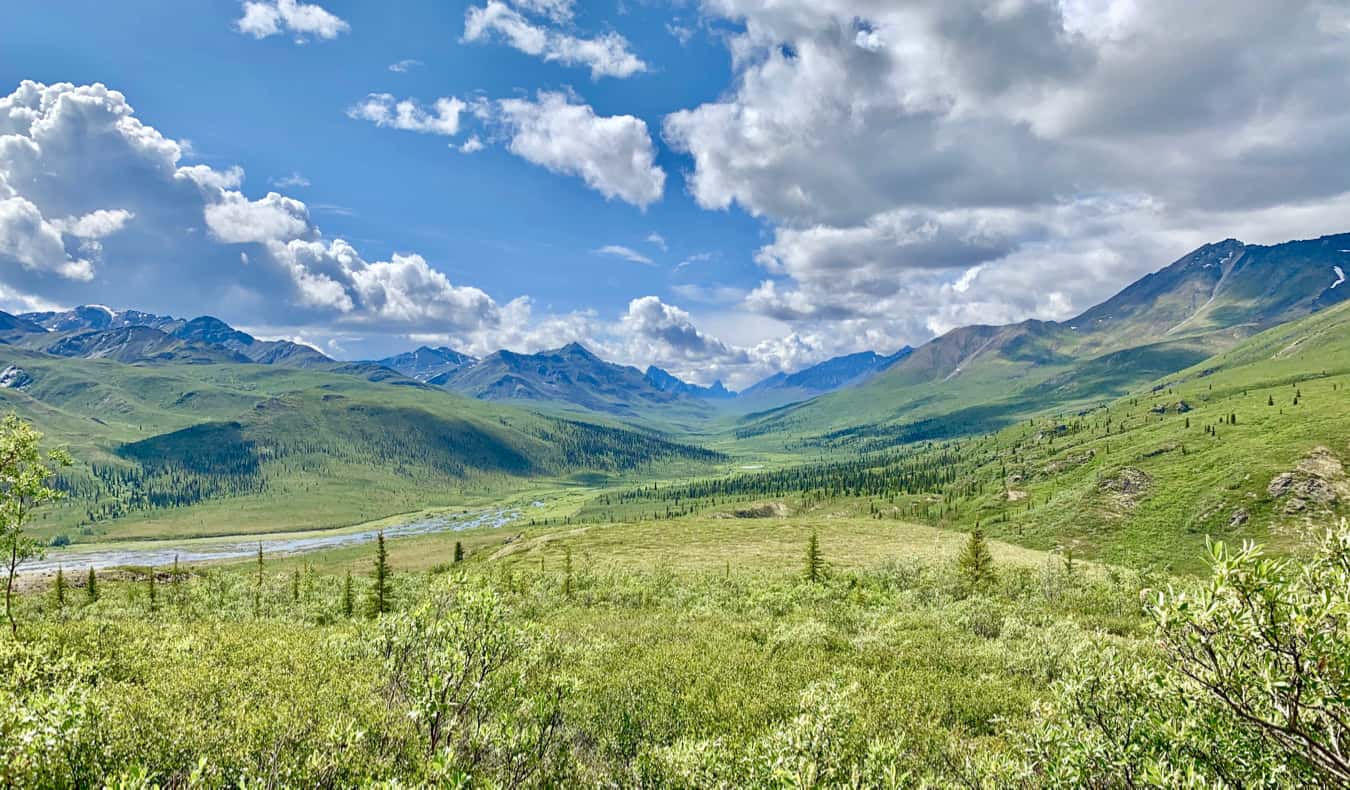
Posted: 11/5/2020 | November 5th, 2020
Canada is home to some of the most pristine and unspoiled landscapes in the world. One of the country’s most scenic regions is the Yukon. In this guest post, writer Ethan Craft shares his tips and advice to help you road trip the region on a budget.
Tucked away in Canada’s northwestern corner is the Yukon Territory, a veritable paradise home to just 35,000 people and endless top-notch wilderness. The Yukon is dominated by thick boreal forest in the south and treeless tundra in the north and dotted with rugged peaks and lakeside beaches in between.
I first visited the territory at age 7 as a half-day shore excursion on an Alaskan cruise (yes, the border really is that close), and didn’t know what to make of it. But returning as an adult, it blew my expectations away.
Due to its sheer size and limited public transit options, I found the Yukon to be an ideal place for a Canadian road trip. Two weeks is perfect for covering the best of what the territory has to offer by car, taking you to both historic towns and untamed wilderness.
With a little bit of northern know-how, I took a summer road trip there on the cheap, and you can too using this handy guide that includes all of the territory’s most famous sights (plus some off-the-beaten-path excitement, too!).
Days 1–3: Whitehorse
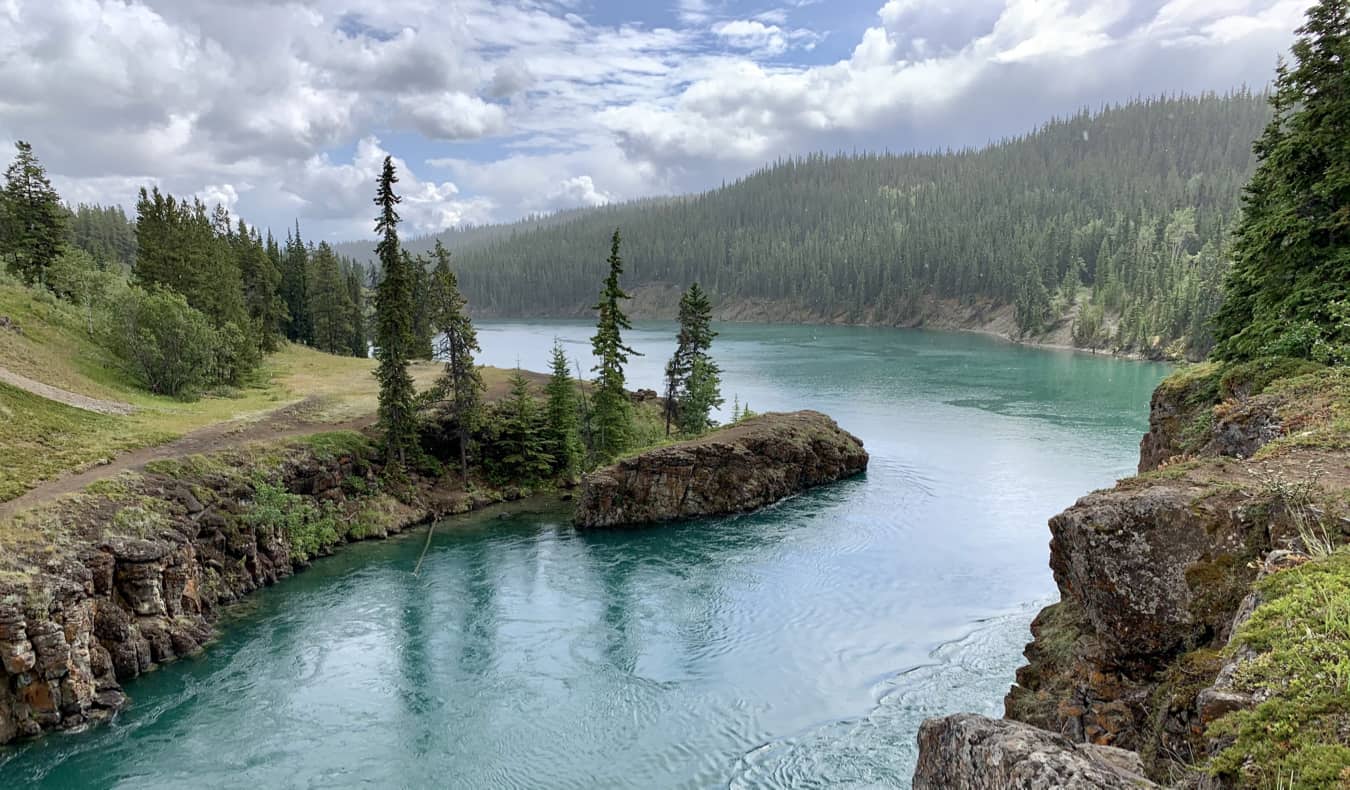
Almost all travelers start their journey in Whitehorse, which is both the Yukon’s capital and largest city, accounting for roughly 70% of the territory’s total population. All major highways pass through here, most rental car agencies are headquartered here, and its Erik Nielsen International Airport offers direct flights to all over Canada, to Alaska, and even to Frankfurt, Germany.
I’d liken Whitehorse to an Austin or Portland of the North; it’s one of the hippest cities I’ve seen in Western Canada. With three days to enjoy, here are some things to do:
- Take in some local history — The four-story MacBride Museum of Yukon History downtown covers every aspect of the territory, with exhibits on the region’s wildlife, art, and Indigenous peoples; the Alaska Highway; and the Klondike Gold Rush, to name just a few.
- Hike Miles Canyon — South of town, the Yukon River has carved a deep canyon that is now home to a network of hiking and biking trails, all anchored by the Miles Canyon Suspension Bridge. According to almost every local I spoke to, the bright blue water here offers the most scenic view in town!
- Eat at the Fireweed Market — If you’re lucky enough to be visiting on a Thursday evening in the summer, swing by the territory’s largest outdoor market. It’s a delicious mix of food trucks, bakers, local artisans, and buskers that gives the markets in Toronto (my hometown) a run for their money. But get here early — some of the locals’ favorite treats can sell out quickly.
- Train with Iditarod sled dogs — Dog lovers, rejoice! In winter, head to the outskirts of Whitehorse to find a range of local sled-dog champions who are happy to offer kennel visits and training runs with a team of race-ready huskies. And don’t worry, you can still visit in the summer (just be ready to race in an ATV instead of a sled). I used Alayuk Adventures near Mt. Lorne and have nothing but praise for Marcelle and her dogs.
- Tour the S.S. Klondike — Now permanently dry-docked next to the river it used to ply, this historic touring ship operated by Parks Canada gives you the run-down on the long and haphazard history of Yukon River paddle wheelers, all while onboard one of the largest ones ever built.
Where to stay
- Town & Mountain Hotel — Like everything in the Yukon, lodging comes at a premium, though this hotel on Main Street appears to offer a fair deal at all times of the year, as well as free parking and an on-site lounge.
- Beez Kneez Bakpakers — The only true hostel in Whitehorse, Beez Kneez is full of perks, including free Wi-Fi, free coffee, laundry service, and a full kitchen.
Tip: Get gas before leaving major population centers. Not only can it be up to 50% more expensive at smaller stations in the backcountry, but you don’t want to risk running out of fuel in the Yukon wilderness. In the far north, you can drive hundreds of miles between gas stations, so fill up wherever you can.
Days 4–5: Dawson City
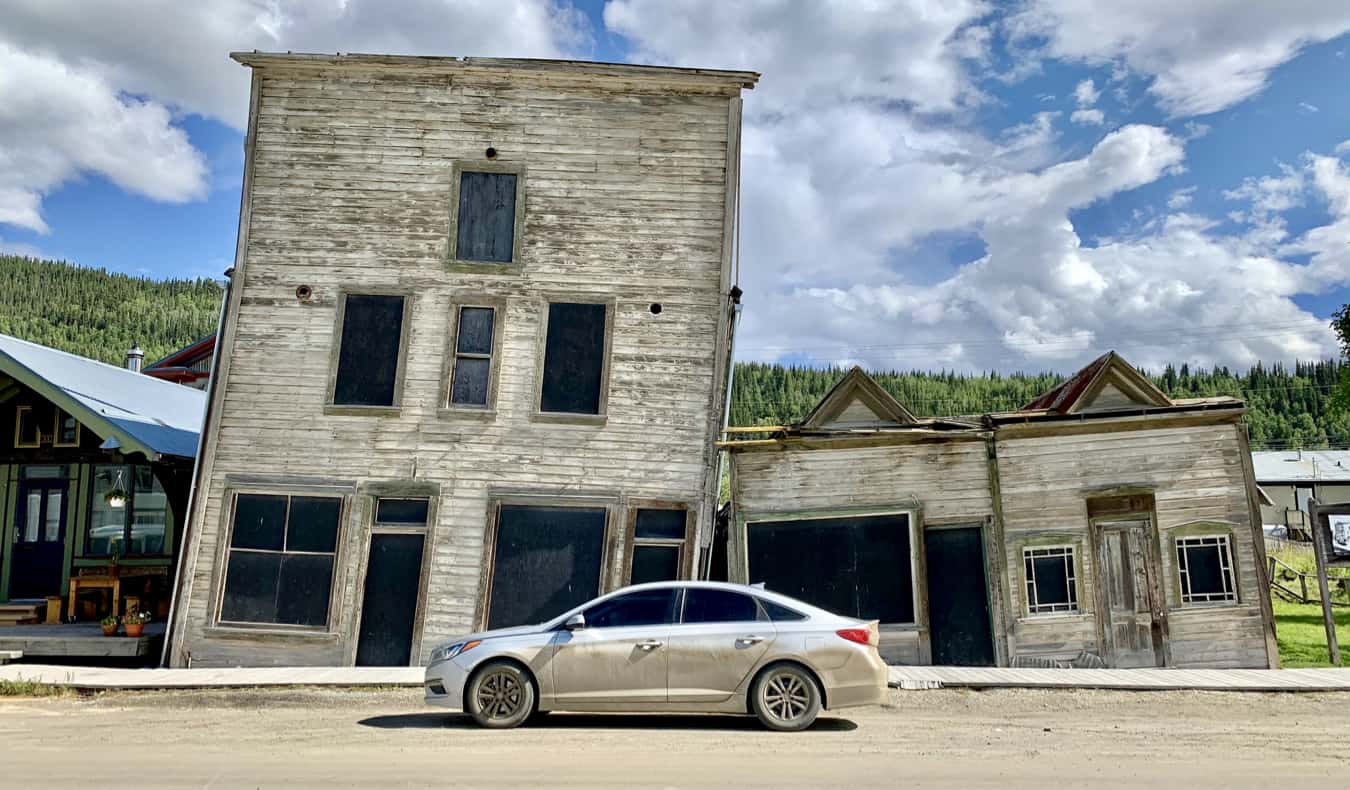
At the height of the Klondike Gold Rush in 1898, Dawson City boasted a population higher than the entire Yukon Territory has today. It’s a textbook boomtown and has preserved its heritage well, maintaining its authentic dirt roads, wood plank sidewalks, and turn-of-the-century buildings.
The drive to Dawson City can be done in as little as five hours from Whitehorse, but that’s without accounting for the numerous viewpoints, roadside hikes, and likely construction delays en route.
Here are a handful of things I’d recommend during your first of two stays in Dawson:
- Drink the Sourtoe Cocktail — This is the quintessential Dawson City activity. The rules for this drink are simple: head to the Sourdough Saloon, order a shot of Canadian whiskey, and down your drink with a mummified human toe in it. And remember: “You can drink it fast or you can drink it slow, but your lips must touch the toe!”
- Visit Dredge No. 4 — South of Dawson City lies the largest gold dredge ever built, a floating fortress that now preserves the gold mining history of the Klondike. It’s recommended to reserve a tour in advance, as it can fill up quickly in peak season.
- Pan for gold — While there are a number of tourist traps throughout the Yukon that offer gold panning in stocked troughs, Claim No. 6 is the real deal. Registered by the government for public use, this stretch of Bonanza Creek near Dredge No. 4 is about as genuine as you can get. I didn’t find any gold nuggets there, but I did snag some gorgeous quartz and polished stones. Be sure to pick up a free gold pan from the Dawson City Visitor Center before you set out!
- Drive to the Midnight Dome — On a hill above town, travelers can find a scenic overlook providing a sweeping view of Dawson City and the surrounding valley. You have two options to get there: a winding road around the mountain, or a very steep hike from downtown.
Where to stay
- Downtown Hotel — This property is one of the cheapest in town, and offers perks for guests. When I checked in, I got 2-for-1 drink coupons at its bar (the famed Sourdough Saloon) and a discount at the in-house Jack London Grill.
- Dawson City River Hostel — Situated in West Dawson, this is the northernmost hostel in Canada! Long a hit with backpackers (especially Europeans), it offers dorms, private rooms, a sauna, and even free bicycle parts. No credit cards.
Days 6-8: The Dempster Highway
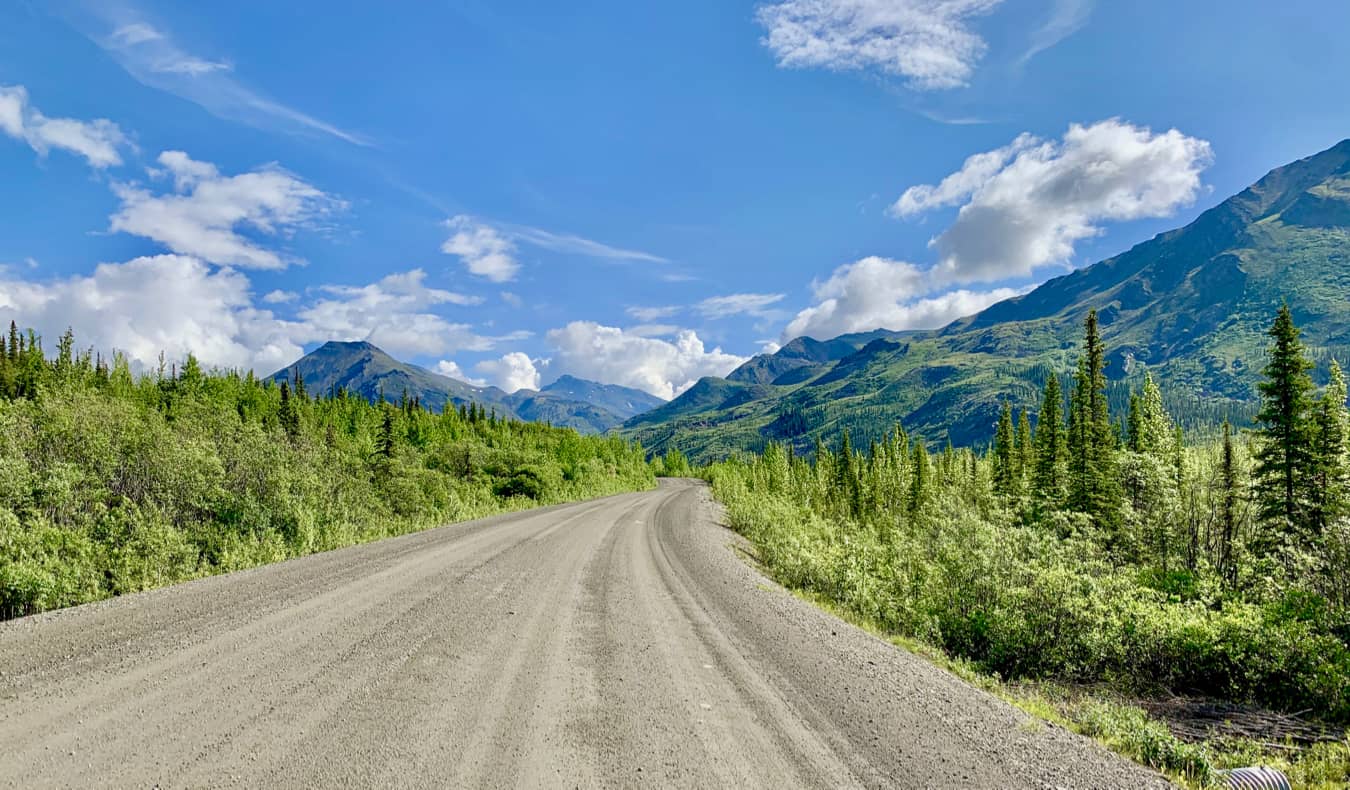
Now the real adventure begins. You’ll find the start of this 571-mile highway twenty minutes east of Dawson City, taking you all the way from the Yukon’s interior to the Arctic Ocean in the Northwest Territories.
The Yukon portion of the highway runs for about 300 miles (482km) through the Tombstone mountain range and endless pristine wilderness, crossing the Arctic Circle. While the drive was tough on both me and my vehicle, the sights and experiences along the way were worth it:
- Hike Tombstone Territorial Park — I think the most striking scenery on the Dempster Highway can be found just an hour into the drive, where you can enjoy jagged mountains and snaking rivers in this no-fee, off-trail territorial park. I stopped by the Visitor Center at kilometer 71 for all the information I needed.
- Stand on the Arctic Circle — There’s no better photo op to prove you experienced the True North than standing on the Arctic Circle, 30 minutes north of Eagle Plains, the only settlement in the area. Soon after, the tree line ends and you’ll be driving through barren tundra.
- See the Midnight Sun or Northern Lights — Depending on the season, you will likely be far enough north to see either 24-hour darkness and the aurora borealis, or 24-hour daylight when the sun never sets. Bring a flashlight or an eye mask accordingly.
- Watch wildlife — Black bears, marmots, foxes, moose, eagles, and herds of caribou so dense they darken the tundra are just a handful of the animals you might encounter on the Dempster Highway. Personally, I saw more wildlife on this stretch of road than I did in the rest of the territory combined. Binoculars are encouraged!
Tip: Prep your car! I cannot stress this enough: the Dempster Highway will batter your car, no matter how rugged it is. Axle-snapping potholes, shredded tires, and broken windshields are not uncommon. At best, you’ll get away with a layer of inch-thick mud. Experienced truckers recommend having at least one full-size spare tire, road flares, a satellite phone, and a 4×4 vehicle (though I did it with no issues in a four-door sedan). Check road conditions here.
Where to stay
- Eagle Plains Motel — This place isn’t cheap, but it is clean, warm — and your only lodging option for 250 miles in either direction.
- Camping — The Yukon government operates a handful of self-register campsites for both tents and RVs along the Dempster Highway. All government campgrounds are cash-only, but they are inexpensive and operate on the honor system.
Note: If you’re renting a car for your Yukon trip, make sure you are allowed to take it on the Dempster Highway — and any other unpaved roads, for that matter. Due to the route’s rough nature, some rental agencies charge an additional fee for Dempster driving, while others ban it outright.
Days 9–10: Dawson City
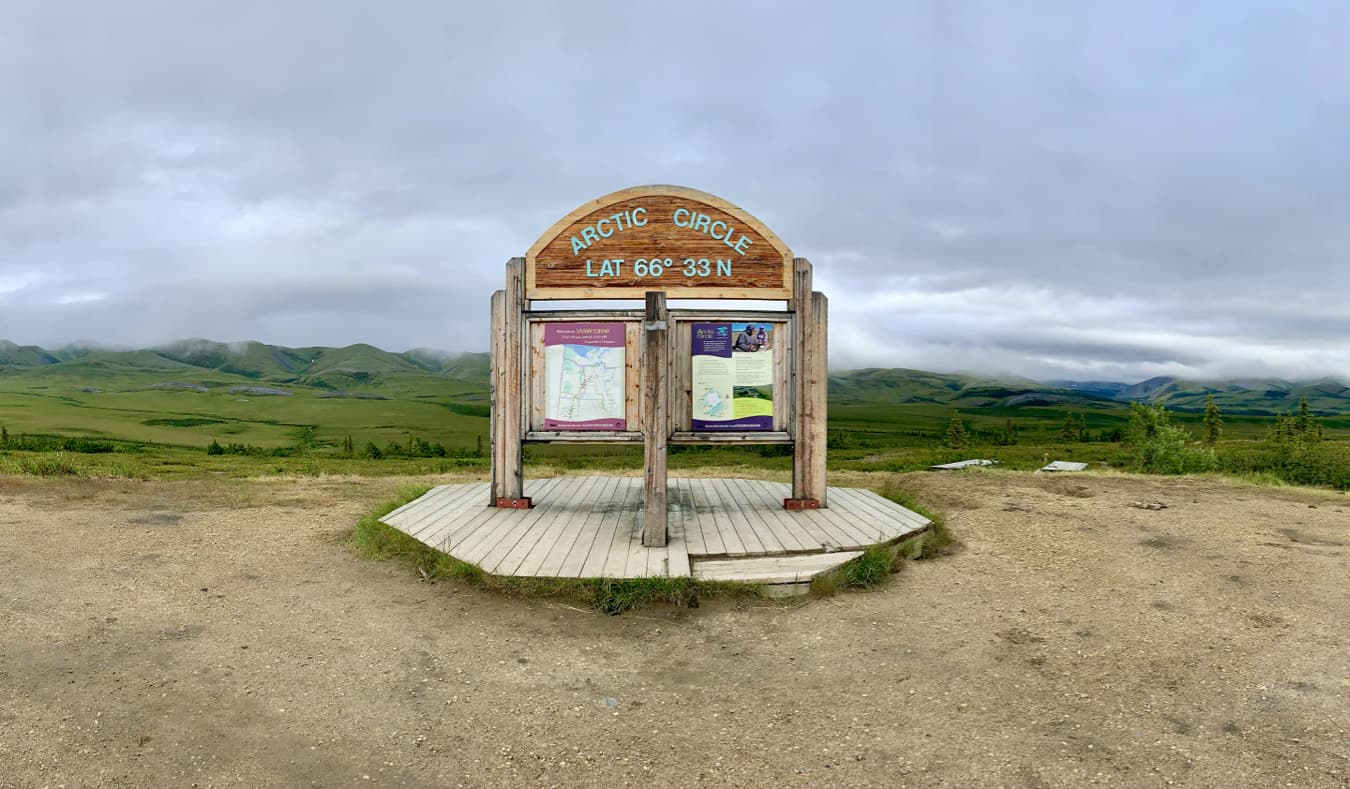
After a few days on the Dempster Highway, nothing felt better than returning to paved roads. While Dawson City is small by any standard, with just roughly 1,500 residents (it’s not even legally a “city” anymore), there is plenty to do here to occupy four days, broken up into two two-night segments. Upon your return to this historic town, here are some activities to make the most of your stay:
- Check out the Dawson City Firefighters Museum — Located at the north end of town, this by-donation museum houses more than a hundred years of Dawson City’s firefighting history. It’s overseen by a former local fire chief who gave me a very personal guided tour of the old trucks he once drove and the blazes he put out.
- Have a drink at Bombay Peggy’s — To celebrate the end of your Dempster Highway adventure, head for Bombay Peggy’s. It’s a fully restored brothel that serves the best mixed drinks and martinis in Dawson, according to every local I spoke with. And see if you can find out how Peggy got her nickname!
- Explore the “Paddlewheel Graveyard” — Along the riverbank in West Dawson, nearly a dozen paddlewheel ships from the early 1900s have been wrecked on the beach, offering photographers and urban explorers the chance to see some unique Yukon ruins. But don’t make my mistake: bring waterproof shoes if you have a pair.
- Press your luck at Gertie’s — There’s not a person in Dawson who won’t point you to Diamond Tooth Gertie’s Gambling Hall for a night of fun. Whether your vice is the casino (like me), the bar (like me), or the nightly can-can dance shows, there’s something for everyone under Gertie’s roof.
Where to stay
- The Bunkhouse — Centrally located, this historic hotel has free parking, the fastest Wi-Fi I used in the Yukon, and, if you’re really on a tight budget, smaller private rooms with shared bathrooms.
- Camping — Take the free 24-hour ferry over to West Dawson and pitch your tent (or park your RV) at the Yukon River Campground. It’s first-come-first-served, but because the site is one of the largest campgrounds in the territory.
Day 11: Faro
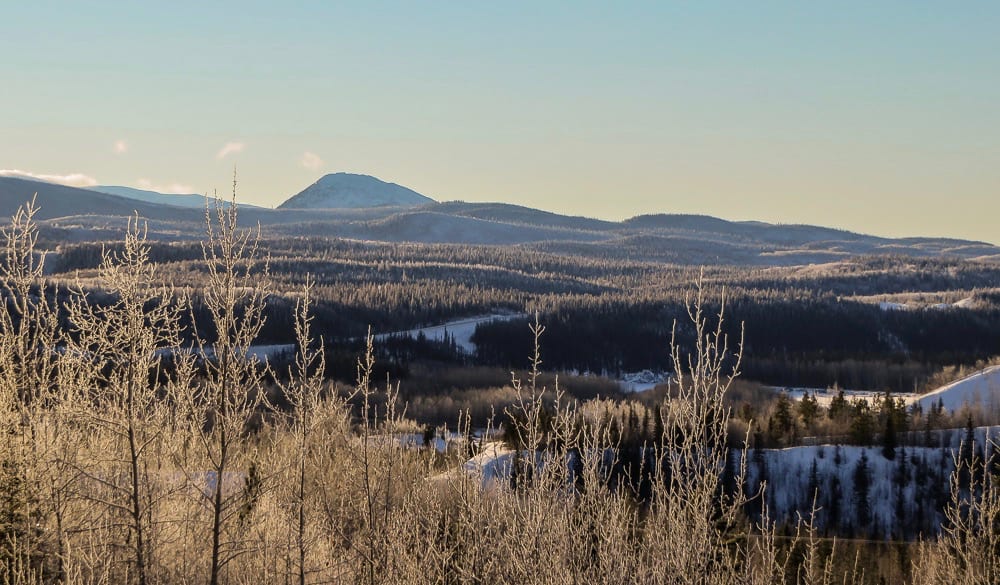
Due to the sparse layout of highways in the Yukon, road trips here can involve a lot of backtracking. But don’t worry, there’s a little-discussed secondary route that eventually leads back to civilization: the Campbell Highway.
Cutting through some of the most unspoiled scenery in North America, this road is arguably more remote than the Arctic Dempster Highway — and depending on weather conditions, it can be even more of a challenge.
After a long day’s drive in the backcountry, your best choice is to overnight in Faro, a small mining community named after a card game. Here are some things to check out:
- Visit the Campbell Region Interpretive Centre — There’s no better place to learn the backstory of the Campbell River region and its eponymous explorer than this small-town museum and visitor center, located in the heart of Faro.
- Golf — Despite a population of just a few hundred residents, the layout of tiny Faro is unique, because there’s a nine-hole golf course running right through the middle of town. For an afternoon of fun, rent a set of clubs and hit the links at the Far North’s quirkiest green.
- Play the lottery — Once known for its zinc mining, the Faro of the 21st century has a new claim to fame: selling a $25 CAD million winning lotto ticket, the largest lottery win in the history of the territory. Years later, townsfolk were still telling me the story. Visit the Discovery Store, the only shop in town, and cross your fingers for a repeat!
Where to stay
- Faro Valley View B&B — This B&B’s rates vary with the seasons but never go higher than around $100 CAD in peak season (in winter, rates are about half that). Satellite TV, Wi-Fi, and snacks are all included in the price.
- Airbnb — While Airbnb hosts are few and far between in this part of the Yukon, I suggest checking out this hidden gem outside of Faro. An off-the-grid cabin situated in true wilderness, this rustic stay offers homemade baked goods, canoe rentals, and even a vegetable garden to eat from.
Day 12: Watson Lake
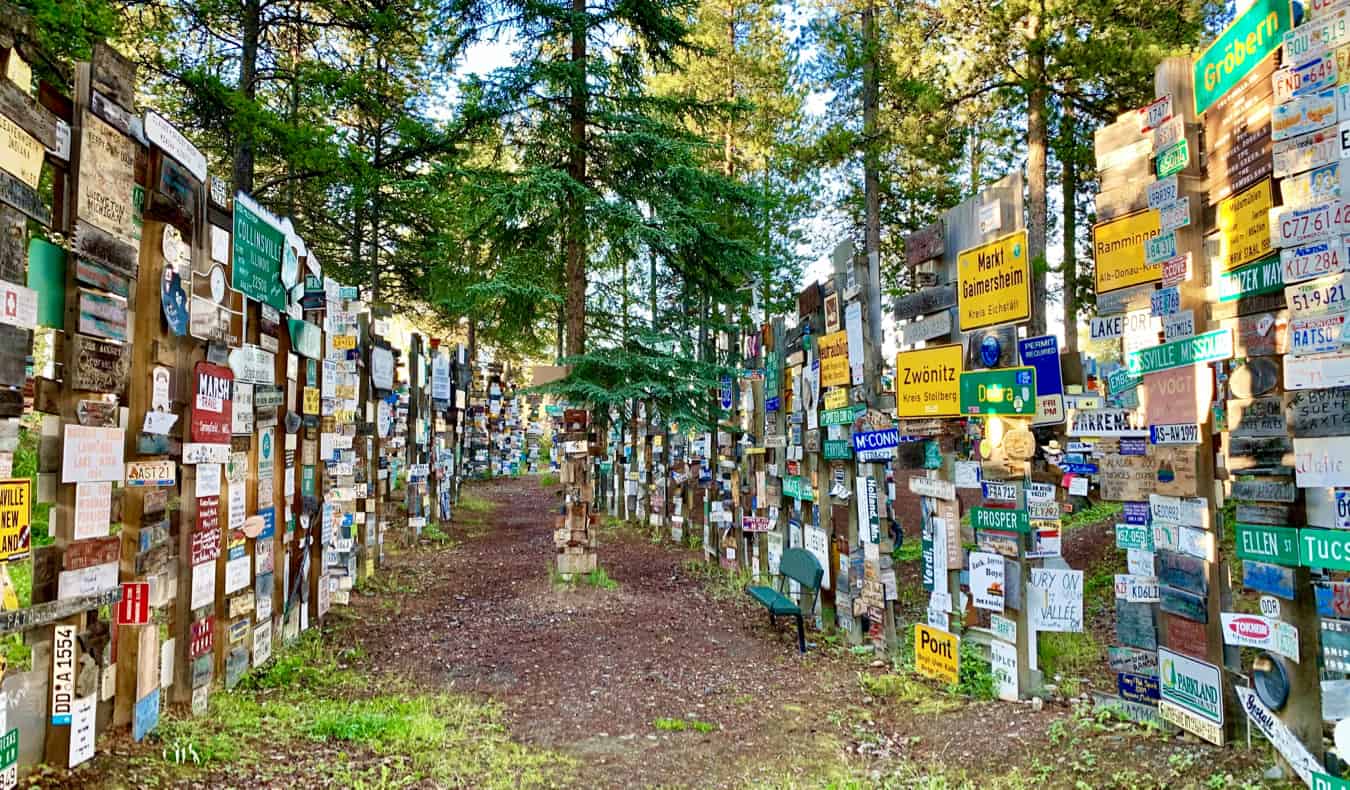
After conquering the remaining five hours of Campbell Highway between Faro and the Alaska Highway, return to pavement once and for all in Watson Lake, a small settlement just north of the British Columbia border. While this remote shred of civilization is hardly bustling, it’s the ideal place to recharge with a warm bed, decent cell phone reception, and a good meal (like the best Chinese food in the Yukon — trust me, I tried almost all of them). Check out some of these attractions in the region:
- Cross the Ross River Suspension Bridge — Built in the 1940s to support the ill-fated Canol Pipeline, this wooden suspension bridge towers over one of the only other towns on the Campbell Highway. Here, the only signs of human civilization are the rusting hulks of trucks and cranes once used to build the pipeline. Required listening: “Canol Road” by legendary Canadian folk singer Stan Rogers.
- Learn about the Northern Lights — In the winter, Watson Lake is one of the most popular places in the territory to view the aurora borealis. But whether or not you’re around to see them in the sky, you can learn about this dazzling phenomenon year-round at the local Northern Lights Centre.
- Wander the Sign Post Forest — Any local will tell you, this is the town’s best attraction. Started by a homesick soldier who first posted a sign pointing to his hometown in Illinois, this literal forest has grown to include tens of thousands of road signs, license plates, and other markers from around the world. As a world traveler and license plate collector, this was my version of heaven.
- Add a sign — It’s not just permitted to leave your mark on the Sign Post Forest, it’s encouraged! Whether you bring a souvenir sign from home or create your own at the visitor center’s small sign-making station, travelers passing through are the ones who keep this attraction growing.
Where to stay
- Air Force Lodge — Located in refurbished World War II barracks, this hotel offers one of the best deals in town, with reasonably priced private rooms (most have shared bathrooms).
- Stampeder’s B&B — This B&B is located in the heart of town and is within walking distance of all shops, restaurants, and attractions.
Days 13–15: Whitehorse
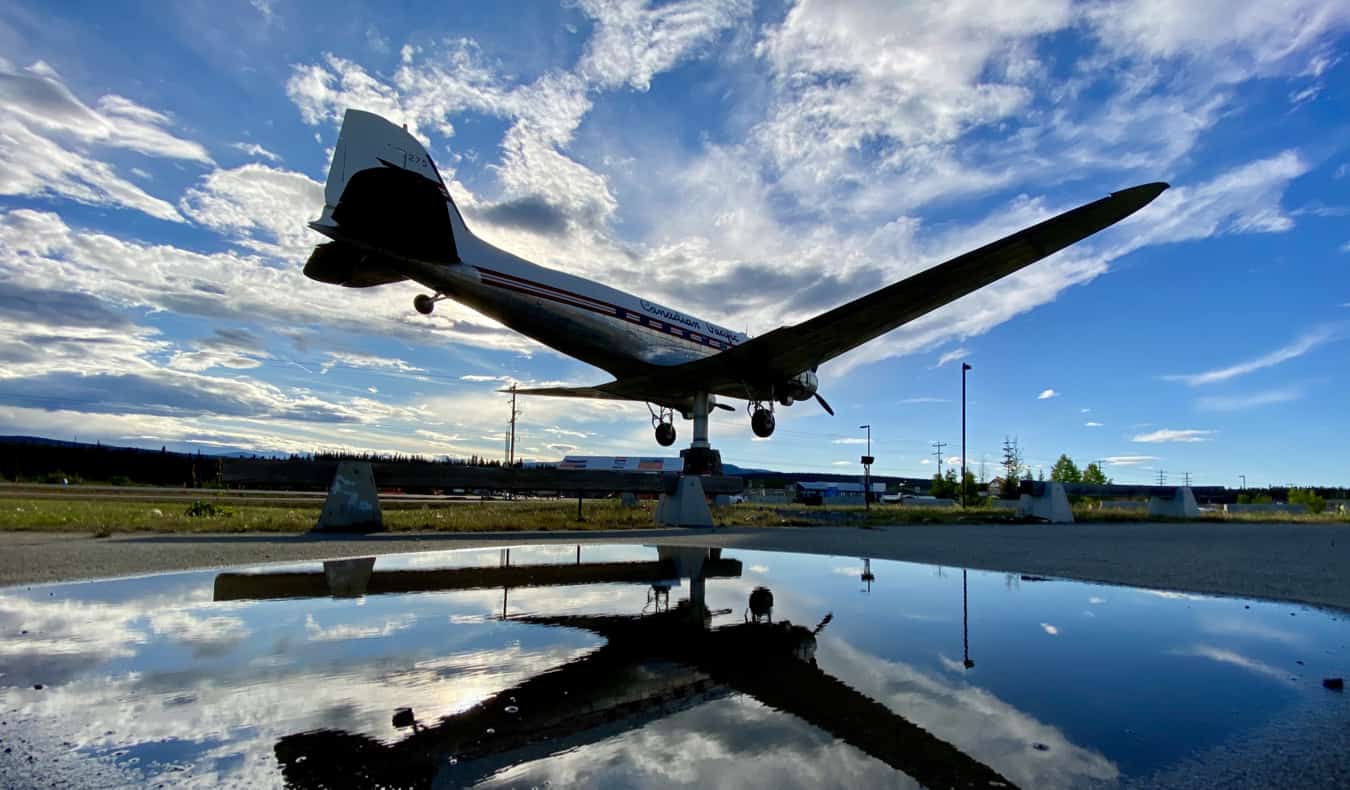
Following nearly two weeks on the road in the Klondike, it’s now time for one last ride down the winding Alaska Highway and a return to Whitehorse. To complete your northern journey, here are a few things to see on the route and what to do once you’re back in town:
- Visit the George Johnston Museum — Located on the shores of Teslin Lake, about halfway between Watson Lake and Whitehorse, this small-town museum focuses on the lives of the local Tlingit Indigenous people and is highly informative.
- Swim in the Takhini Hot Pools — These steaming hot springs have been in operation for over a hundred years, warming locals and tourists alike in chilly Whitehorse. If you visit on a day when the temperature is at least -20°C, be sure to enter the Hair Freezing Contest for a chance to win $2,000 CAD.
- Take a day trip to Carcross — This is where at age 7 I first laid eyes on the Yukon. With some time to spare, take a trip to this quaint town 45 minutes south of Whitehorse. The terminus of the scenic White Pass & Yukon Railroad that connects to the Alaskan coast, Carcross also lays claim to the oldest store in the Yukon and a patch of sand dunes billed as the world’s northernmost desert.
- Drink at the Yukon Brewing Company — In the world of craft brews, the Yukon Brewing Company is known as one of the most prolific brands in Canada’s north. Ales, lagers, and IPAs are all on offer at this famous Whitehorse brewery.
Where to stay
- Four Seasons B&B — In the heart of Whitehorse’s trendy Riverdale neighborhood, this beautiful bed-and-breakfast offers 10% nightly discounts on longer bookings. Note: In the high season, it requires a two-night minimum stay.
- Hot Springs Hostel — This year-round hostel is located next to the Takhini Hot Pools and guests get 20% off.
This two-week itinerary covers almost all the Yukon has to offer in a reasonable amount of time, but, for the true outdoorsman or dedicated explorer, there is much more than can be seen with an additional week: Canada’s highest mountain in Kluane National Park, a perfectly preserved mining town at Keno City, and the scenic White Pass & Yukon Railroad into Alaska, just to name a few.
Yukon is one of the least explored and most underrated parts of Canada. It’s the perfect place for a road trip, to get away from the crowds, and to get closer to nature. Enjoy!
Ethan Craft is a journalist, dual American-Canadian citizen, and lifelong traveler who visited all 50 U.S. states before he could legally have a beer in any of them. Recent trips have taken him to the Arctic Circle, Mexico, Morocco, and the Azores in his long-term quest to visit every corner of the globe. Ethan is currently based in Toronto, Canada.
Book Your Trip to Canada: Logistical Tips and Tricks
Book Your Flight
Find a cheap flight by using Skyscanner or Momondo. They are my two favorite search engines because they search websites and airlines around the globe so you always know no stone is left unturned.
Book Your Accommodation
You can book your hostel with Hostelworld. If you want to stay elsewhere, use Booking.com as they consistently return the cheapest rates for guesthouses and cheap hotels.
Don’t Forget Travel Insurance
Travel insurance will protect you against illness, injury, theft, and cancellations. It’s comprehensive protection in case anything goes wrong. I never go on a trip without it as I’ve had to use it many times in the past. I’ve been using World Nomads for ten years. My favorite companies that offer the best service and value are:
- World Nomads (for everyone below 70)
- Insure My Trip (for those over 70)
- Medjet (for additional repatriation coverage)
Looking for the best companies to save money with?
Check out my resource page for the best companies to use when you travel! I list all the ones I use to save money when I travel – and I think will help you too!gho
Want More Information on Canada?
Be sure to visit our robust destination guide on Canada for even more planning tips!
Photo credit: 6 – Susan Drury
The post How to Road Trip the Yukon on a Budget appeared first on Nomadic Matt's Travel Site.
In ấn Anpic In nhãn mác Anpic In brochure Anpic In card visit Anpic In catalogue Anpic In thiệp cưới Anpic In tờ rơi Anpic
In Ấn Anpic – Nổi Tiếng In Đẹp In Nhanh
Số 5 Ngõ 75 Nguyễn Xiển, Thanh Xuân, Hạ Đình, Hà Nội
0963223884
baogiainananh@gmail.com
https://anpic.vn
https://g.page/inananpic
In nhãn mác Anpic ✅ In brochure Anpic ✅ In card visit Anpic ✅ In catalogue Anpic ✅ In thiệp cưới Anpic ✅ In tờ rơi Anpic
https://anpic.vn/in-nhan-mac-dep
https://anpic.vn/in-brochure
https://anpic.vn/in-an
https://anpic.vn/in-voucher-in-phieu-giam-gia-khuyen-mai
#inananpic
Comments
Post a Comment